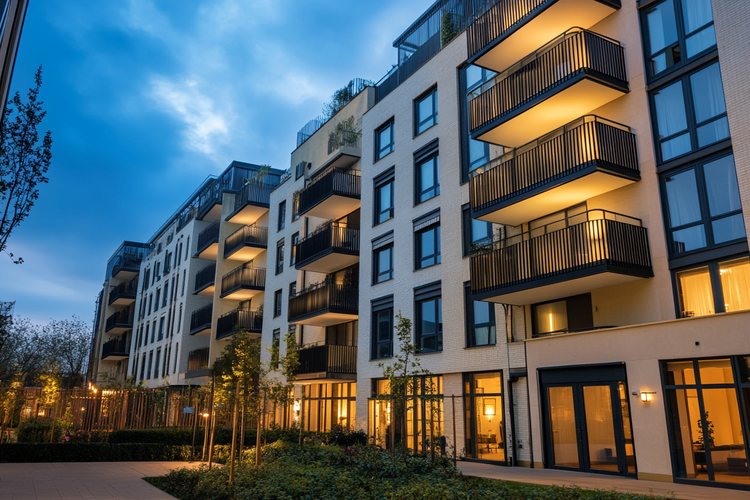Title: The Surge of Micro-Apartments in Urban Real Estate Markets
Introduction: Recent data shows a 27% increase in micro-apartment developments across major U.S. cities over the past two years. This compact living trend is reshaping urban real estate landscapes, challenging traditional notions of space and affordability. As city populations grow and housing costs soar, micro-apartments emerge as a potential solution to the urban housing crunch.

The Economic Drivers Behind the Trend
The rise of micro-apartments is largely driven by economic factors. In cities like San Francisco, where the median rent for a one-bedroom apartment exceeds $3,000, micro-units offer a more affordable entry point into desirable neighborhoods. Developers find these projects attractive due to higher potential returns per square foot. For young professionals and students, micro-apartments provide an opportunity to live in prime locations without the premium price tag of larger units.
Design Innovations in Micro-Living
Architects and designers are at the forefront of the micro-apartment movement, developing innovative solutions to make small spaces both livable and appealing. Multi-functional furniture, such as Murphy beds that transform into desks or dining tables, is becoming standard. Some developments incorporate communal spaces like rooftop gardens, co-working areas, and shared kitchens to complement the compact private units. These design strategies not only maximize space but also foster a sense of community among residents.
The Impact on Urban Planning and Zoning
The micro-apartment trend is challenging existing zoning laws and building codes in many cities. Municipalities are grappling with questions about minimum unit sizes, occupancy limits, and parking requirements. Some cities, recognizing the potential of micro-units to address housing shortages, are adapting regulations to accommodate these developments. For instance, Seattle has adjusted its zoning codes to allow for smaller minimum unit sizes in certain areas, paving the way for more micro-apartment projects.
Demographic Shifts and Changing Lifestyles
Micro-apartments appeal to a specific demographic: primarily young, single professionals and students who prioritize location over space. This aligns with broader societal shifts towards later marriages, smaller households, and a preference for urban living. However, the trend is not without controversy. Critics argue that the proliferation of micro-units could lead to a reduction in family-sized apartments and potentially alter the demographic makeup of neighborhoods.
The Role of Technology in Micro-Living
Technology plays a crucial role in making micro-apartments viable and attractive. Smart home systems allow residents to control lighting, temperature, and even furniture configurations through their smartphones. Some developments are experimenting with modular designs that enable rooms to be reconfigured throughout the day. These technological integrations are not just about convenience; they’re essential for maximizing the functionality of limited space.
Environmental Considerations
From an environmental perspective, micro-apartments offer potential benefits. Smaller living spaces generally require less energy to heat and cool, resulting in a reduced carbon footprint. The urban locations of many micro-apartment developments also encourage walking, cycling, and use of public transportation, further reducing environmental impact. However, the sustainability of these units also depends on factors like construction materials and overall building efficiency.
Market Outlook and Future Projections
Real estate analysts project continued growth in the micro-apartment sector, particularly in high-density urban areas with strong job markets. A recent study by Urban Land Institute suggests that micro-units could account for up to 15% of new apartment construction in major U.S. cities by 2025. However, the long-term success of this trend will depend on factors such as regulatory support, economic conditions, and evolving consumer preferences.
Challenges and Controversies
Despite their growing popularity, micro-apartments face several challenges. There are concerns about the long-term livability of such small spaces and their impact on mental health. Some critics argue that the trend could lead to a lowering of living standards and exacerbate issues of overcrowding in urban areas. Additionally, there’s debate about whether micro-apartments truly address affordability issues or simply allow developers to charge more per square foot.
Investment Implications
For real estate investors, micro-apartments present an intriguing opportunity. The higher per-square-foot rental yields can be attractive, especially in markets with high land costs. However, investors must carefully consider factors such as local regulations, target demographics, and potential for market saturation. The novelty of the concept also means that long-term performance data is limited, adding an element of risk to these investments.
In conclusion, the surge of micro-apartments represents a significant shift in urban real estate markets. As cities continue to grapple with housing affordability and density issues, these compact living spaces offer a potential solution—albeit one that comes with its own set of challenges and controversies. The success and sustainability of this trend will ultimately depend on how well it can balance the needs of residents, developers, and urban planners in creating livable, affordable, and vibrant city spaces.





